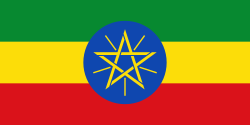- Argentina
- Australia
- Austria
- Bangladesh
- Belgium
- Botswana
- Brazil
- Bulgaria
- Canada
- Chile
- China
- Colombia
- Cuba
- Czech Republic
- Egypt
- Estonia
- Ethiopia
- Finland
- France
- Germany
- Ghana
- Greece
- Hong Kong
- Hungary
- India
- Indonesia
- Ireland
- Israel
- Italy
- Japan
- Kenya
- Latvia
- Lebanon
- Lithuania
- Malaysia
- Mexico
- Morocco
- Namibia
- Netherlands
- New Zealand
- Nigeria
- Norway
- Pakistan
- Peru
- Philippines
- Poland
- Portugal
- Romania
- Russia
- Saudi Arabia
- Senegal
- Singapore
- Slovakia
- Slovenia
- South Africa
- South Korea
- Spain
- Sweden
- Switzerland
- Taiwan
- Tanzania
- Thailand
- Turkey
- Uganda
- Ukraine
- United Arab Emirates
- United Kingdom
- United States
- Venezuela
- Vietnam
- Zimbabwe

Ethiopia Science News API
Get the live top science headlines from Ethiopia with our JSON API.
Get API key for the Ethiopia Science News APIAPI Demonstration
This example demonstrates the HTTP request to make and the JSON response you will receive when you use the news api to get the top headlines from Ethiopia.
GET
https://gnews.io/api/v4/top-headlines?country=et&category=science&apikey=API_KEY
{
"totalArticles": 446,
"articles": [
{
"id": "acca0243c349c791396ce0ba6c8d7361",
"title": "Breathtaking James Webb Telescope image reveals what happens when two galaxies collide",
"description": "Created using data from the James Webb Space Telescope and NASA’s Chandra X-ray Observatory, the image offers scientists a rare, face-on view of how galaxies interact and merge.",
"content": "A breathtaking new space image has captured two spiral galaxies in the middle of a slow-motion cosmic collision, glowing in shades of blue, red, and silver.\nThe picture shows galaxies NGC 2207 and IC 2163 as they drift towards each other, locked in a... [1534 chars]",
"url": "https://www.euronews.com/next/2025/12/23/breathtaking-james-webb-telescope-image-reveals-what-happens-when-two-galaxies-collide",
"image": "https://images.euronews.com/articles/stories/09/59/20/67/1200x675_cmsv2_ea52b451-2aaa-5848-b294-e9ad1d39be51-9592067.jpg",
"publishedAt": "2025-12-23T14:32:02Z",
"lang": "en",
"source": {
"id": "fe7887ab38dfaf6c0f8af3a124d38295",
"name": "Euronews.com",
"url": "https://www.euronews.com"
}
},
{
"id": "93f07a403596b18adc3fc9e991b9b8f9",
"title": "Student discovers 75-million-year-old Cretaceous dragonfly",
"description": "A student discovers the first dragonfly fossil from the age of the dinosaurs in Canada. Cordualadensa acorni lived 75 million years ago.",
"content": "A university student cracked open a rock in Alberta’s Dinosaur Provincial Park and uncovered Canada’s first dinosaur-era dragonfly fossil.\nThat 75-million-year-old wing from the late-Cretaceous, the last period of the dinosaur era, belonged to an und... [5311 chars]",
"url": "https://www.earth.com/news/student-discovers-75-million-year-old-dragonfly-fossil-cordualadensa-acorni/",
"image": "https://cff2.earth.com/uploads/2025/12/14133048/first-cretaceous-dragonfly-canada.jpg",
"publishedAt": "2025-12-23T14:23:36Z",
"lang": "en",
"source": {
"id": "fca72a05020e12df547eedb79c870663",
"name": "Earth.com",
"url": "https://www.earth.com"
}
},
{
"id": "8bc066df2008ab3f6fe0e7556276f9dd",
"title": "Rare Hall effect reveals design pathways for advanced spintronic materials",
"description": "Scientists at Ames National Laboratory, in collaboration with Indranil Das's group at the Saha Institute of Nuclear Physics (India), have found a surprising electronic feature in transitional metal-based compounds that could pave the way for a new class of spintronic materials for computing and memory technologies.",
"content": "Scientists at Ames National Laboratory, in collaboration with Indranil Das's group at the Saha Institute of Nuclear Physics (India), have found a surprising electronic feature in transitional metal-based compounds that could pave the way for a new cl... [2573 chars]",
"url": "https://phys.org/news/2025-12-rare-hall-effect-reveals-pathways.html",
"image": "https://scx2.b-cdn.net/gfx/news/hires/2025/recent-research-reveal.jpg",
"publishedAt": "2025-12-23T13:48:38Z",
"lang": "en",
"source": {
"id": "6063be7565dcd637bb5d2946ed6c5329",
"name": "Phys.org",
"url": "https://phys.org"
}
}
]
}